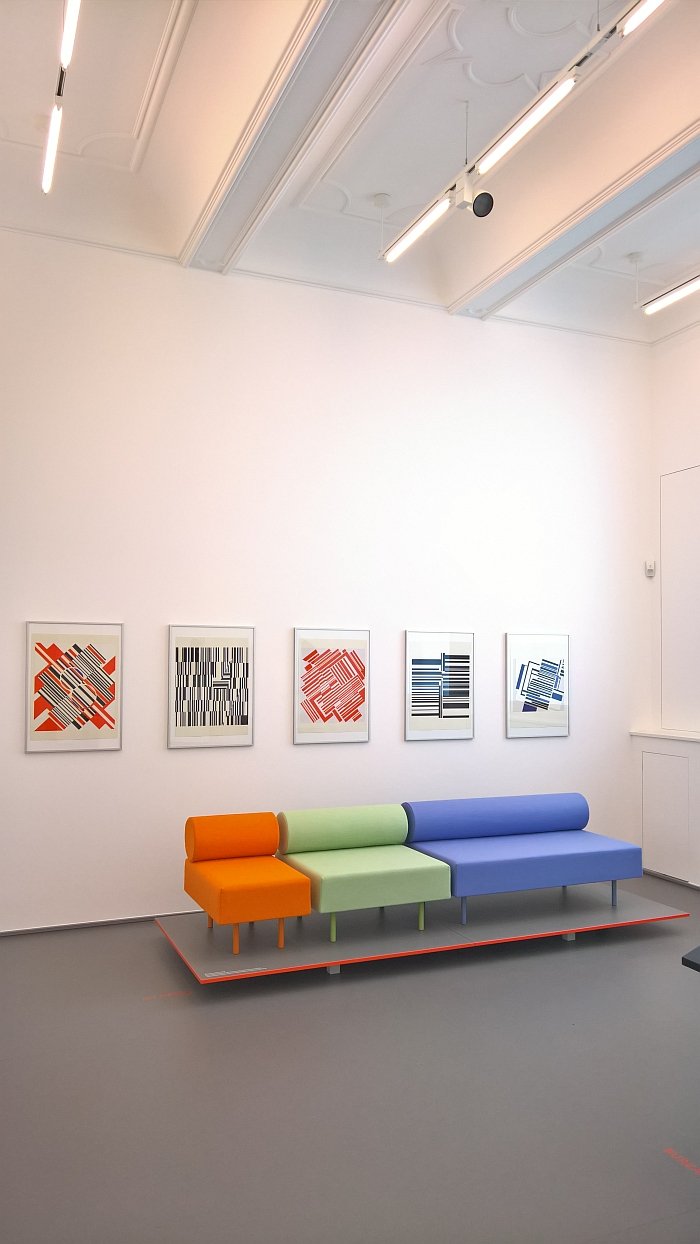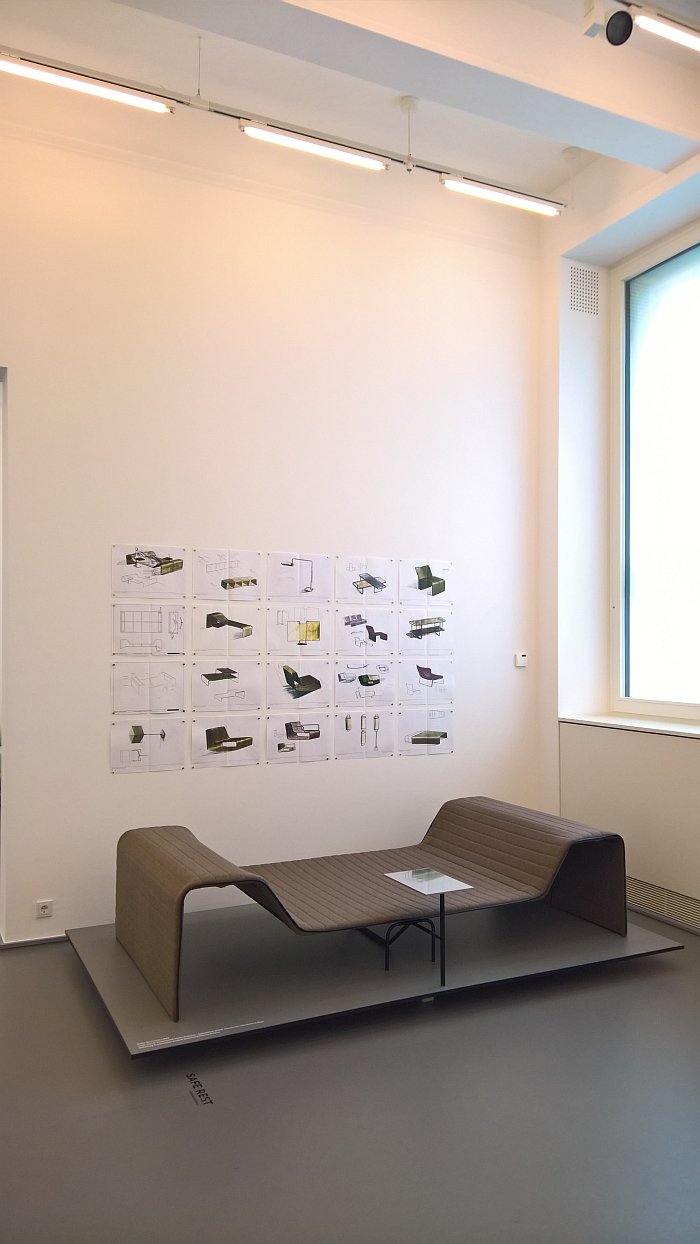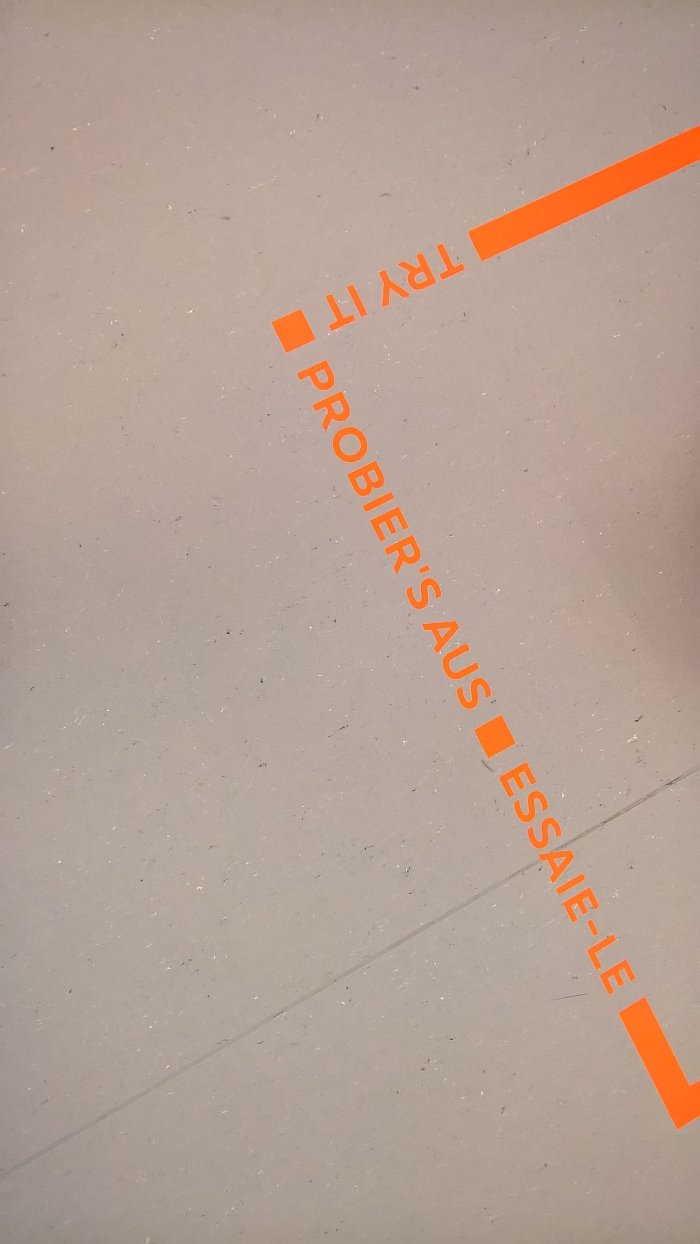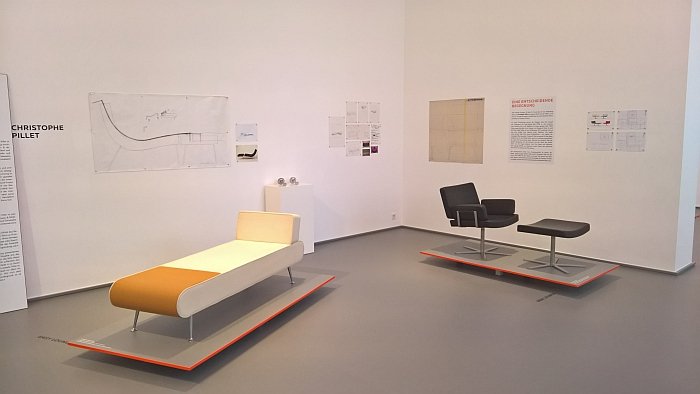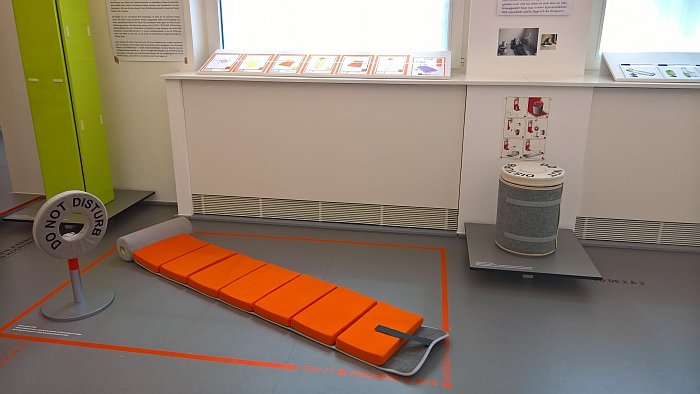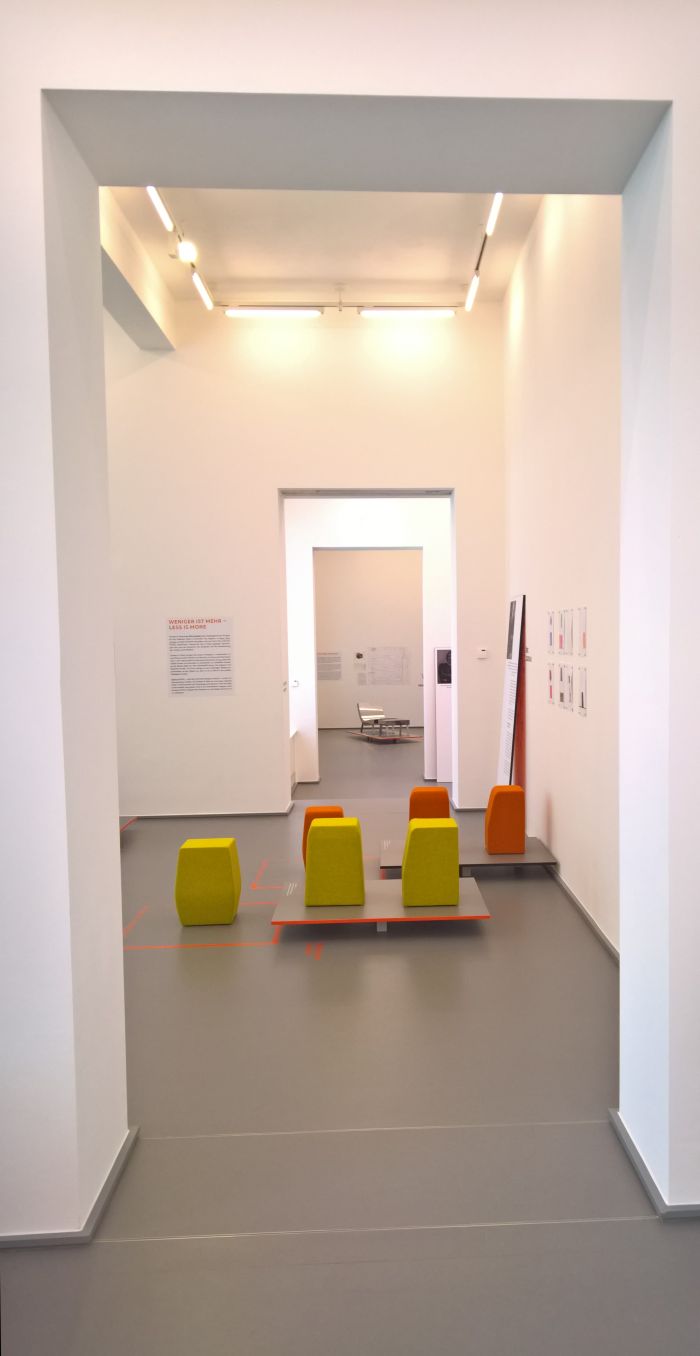Established in 1897 as an institution for pure and applied arts the Kaiser Wilhelm Museum in Krefeld was, for all through the person of its founding director Friedrich Deneken, an important protagonist in the discourse concerning the relationships between art, craft and industry at the turn of the 20th century
With the exhibition From Idea to Form. Domeau & Pérès: Design and Craftsmanship in Dialogue, the contemporary Kaiser Wilhelm Museum Krefeld continue this discourse.
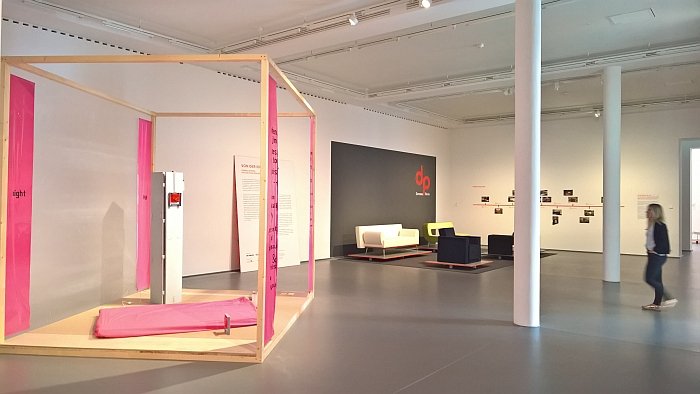
If one were to compose a very, very, potted, arguably inaccurate, history of the development of French furniture design from the end of the second World War up until the 1990s it would run over the likes Mathieu Matégot on to Pierre Paulin and Roger Tallon and up to Philippe Starck. As we said, a very, very potted history.
By the late 1990s a younger generation of French designers, arguably a post-post-modern generation, were emerging and exploring new ways of not only designing but also producing, creating and forming; in our interview with Ronan Bouroullec he noted in context of late '90s Paris that "it was a very free period, largely because it wasn’t about industrial design, it was all about objects and there are limitless ways to realise objects. At that period design wasn’t yet an adjective but was in the process of becoming one, and so it was all very free."
Domeau & Pérès a.k.a. Master Saddler Bruno Domeau and Master Upholsterer Philippe Pérès were one of the few French manufacturers to tap into that sense of freedom at the end of the 20th century and offer opportunities for that generation of young, emerging, French designer.
And their preferred method of realising objects was through the contemporary application of traditional crafts.
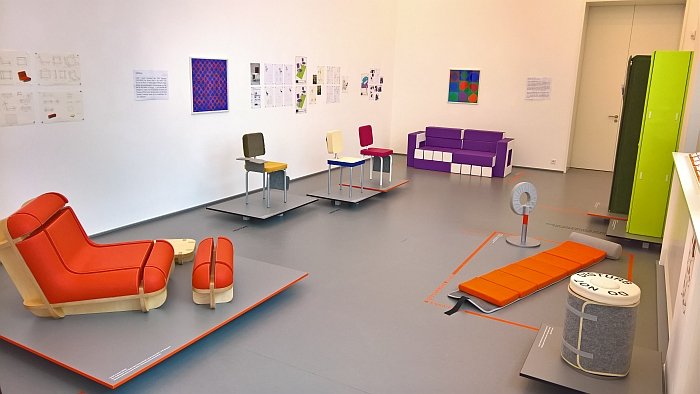
The story of Domeau & Pérès begins in 1994 when Christophe Pillet, a Domus Academy graduate and former employee of first Michele de Lucchi and subsequently Philippe Starck, commissioned the, then still individually trading, craftsmen, to upholster stools he had designed for the bar What's Up in Paris, further commissions followed and in context of a 1996 sofa project Domeau & Pérès was formally established. In 1997 Christophe Pillet was appointed artistic director of the Paris Salon du Meuble, persuaded Domeau & Pérès to take a stand, a stand which over the subsequent three years saw them present works, often the first commissioned works, from designers as varied as Jean-Marie Massaud, Michael Young, Matali Crasset and Ronan & Erwan Bouroullec.
The subsequent decades have seen Domeau & Pérès expand their portfolio through collaborations with largely, though not exclusively, French designers and architects, both established and establishing, in addition to the re-edition of works by Sophie Taeuber-Arp and a series of chairs based on objects created for the films of Jacques Tati.
Presenting works by 12 designers from across the past 20 years, From Idea to Form reflects this diversity, and in doing so helps explain how this diversity, and the discourse between the high-end craft informed understandings of Domeau & Pérès and the individual series production sensibilities of each of the 12 designers, has helped shape the portfolio.
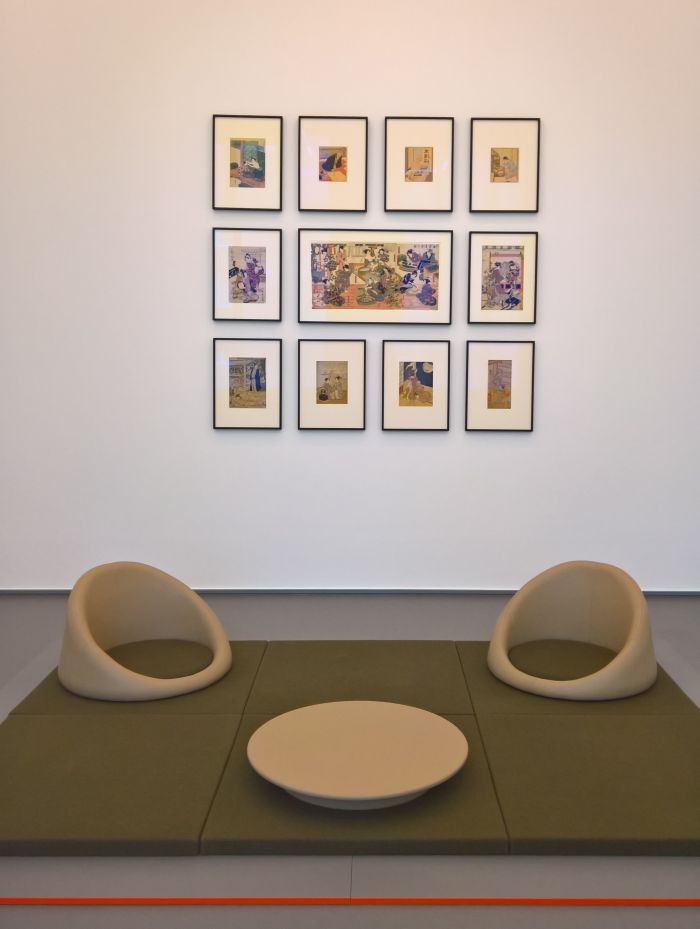
Presenting one or more work from each designer supported by sketches, photographs and other background, preparatory, archive material which help explain the nature of the product development, the particular challenges that needed to be overcome, From Idea to Form is a very nicely paced exhibition, one in which while you're unlikely to be taken by everything you see, everything you see is part of the overall composition; consequently, you have to detach your personal appreciation of the object from its context and relevance, an important skill and a process in which the intelligently written texts support and encourage you.
A particularly pleasingly aspect is that works of art from the museum's collection have been distributed throughout the exhibition, works which compliment, and in many ways expand the design on display: a series of prints by Günter Fruhtrunk hang, for example, above the Au Mètre collection by Èric Chevallier; the 1928 Bureau by Sophie Taeuber-Arp is set against works by Piet Mondrian; while two Le Corbusier paintings hang next to the Bouroullec's Bureau. A most interesting juxtaposition, not least on account of the desk's Prouvé-esque silhouette
But perhaps most satisfying is that there are sitting objects you can sit on. As we noted from INSIDE architecture by Åke Axelsson, Jonas Bohlin, Mats Theselius at the Konstakademien, Stockholm, such really should be normal in exhibitions involving chairs, not least because, the sitting experience is essential, fundamental, to considerations on any chair design. You can't assess a chair just by looking at it. Thankfully the Kaiser Wilhelm Museum Krefeld understand that. Yes, invariably all the objects you want to sit on, you can't. But life's hard. You can't always get your own way. Sorry.
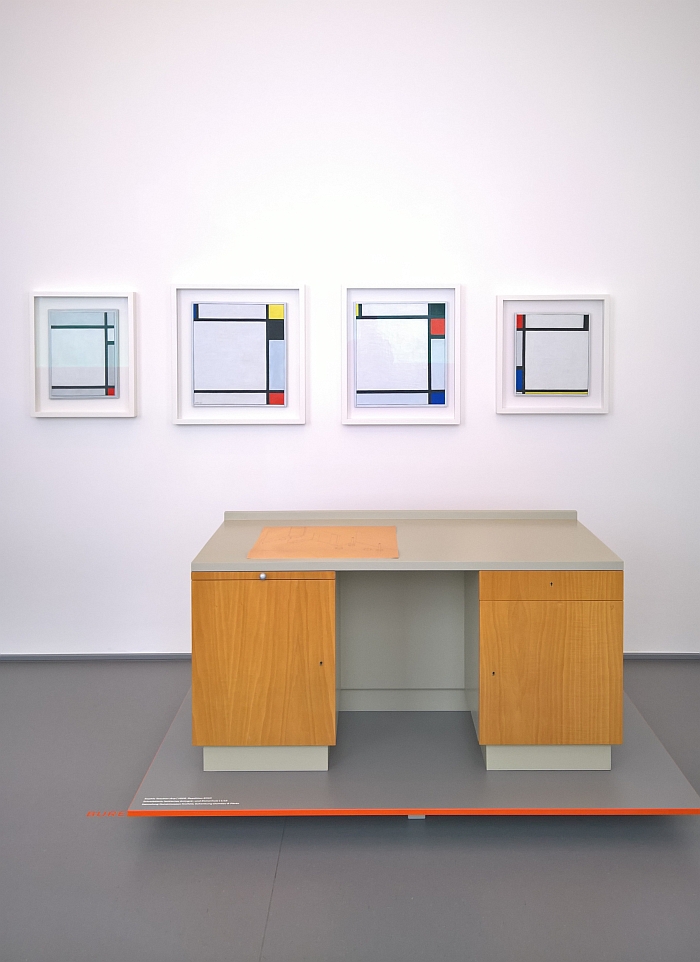
Despite the apparently obvious focus on the designers and their works, they are but conduits, the real explorations are that of the creative process, of the relationship between craft and design, and for all of the relationship between designer, craftsman and producer, how a constructive, creative interplay can work to the benefit of both sides, and in which context it can be considered as a nice compagnon to Wagner, Hoffmann, Loos and Viennese Modernist Furniture Design. Artists, Patrons, Producers at the Hofmobiliendepot Vienna. The necessary Jugendstil is provided elsewhere in the Kaiser Wilhelm Museum Krefeld. But more on that later.
As ever with exhibitions dedicated to a single manufacturer an important factor for us is the "Thonet Test" we developed in context of the 2014 exhibition Sitting – Lying – Swinging. Furniture from Thonet at the Grassi Museum for Applied Arts, Leipzig i.e. is it just advertising for the manufacturer?
Yes, it does, unquestionably, provide publicity for Domeau & Pérès. And yes, we are contributing to that with this post.
We are very aware of that.
But didn't have to write anything.
We could have ignored it.
However. Through the sketches and archive material it as an exhibition which helps explain differing ways by which furniture projects can develop, helps explain how materials and processes can influence a design process, helps explain the challenges faced at the intersection between craft and design, helps explain the nature of the relationship between designer and manufacturer and thereby functions on a level above the objects, and in doing so, on the one hand achieves one of the important roles of museums, namely informing and educating, and on the other provides a very accessible, open and entertaining introduction to the process, the evolution, from idea to form.
From Idea to Form. Domeau & Pérès: Design and Craftsmanship in Dialogue runs at the Kaiser Wilhelm Museum, Joseph Beuys-Platz 1, (ehemals Karlsplatz 35), 47798 Krefeld until Sunday October 14th.
Full details including information on opening times and the accompanying fringe programme can be found at http://kunstmuseenkrefeld.de
